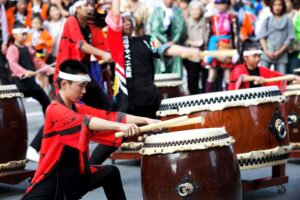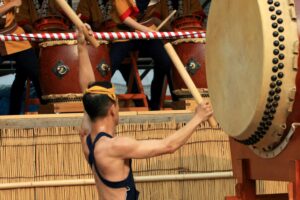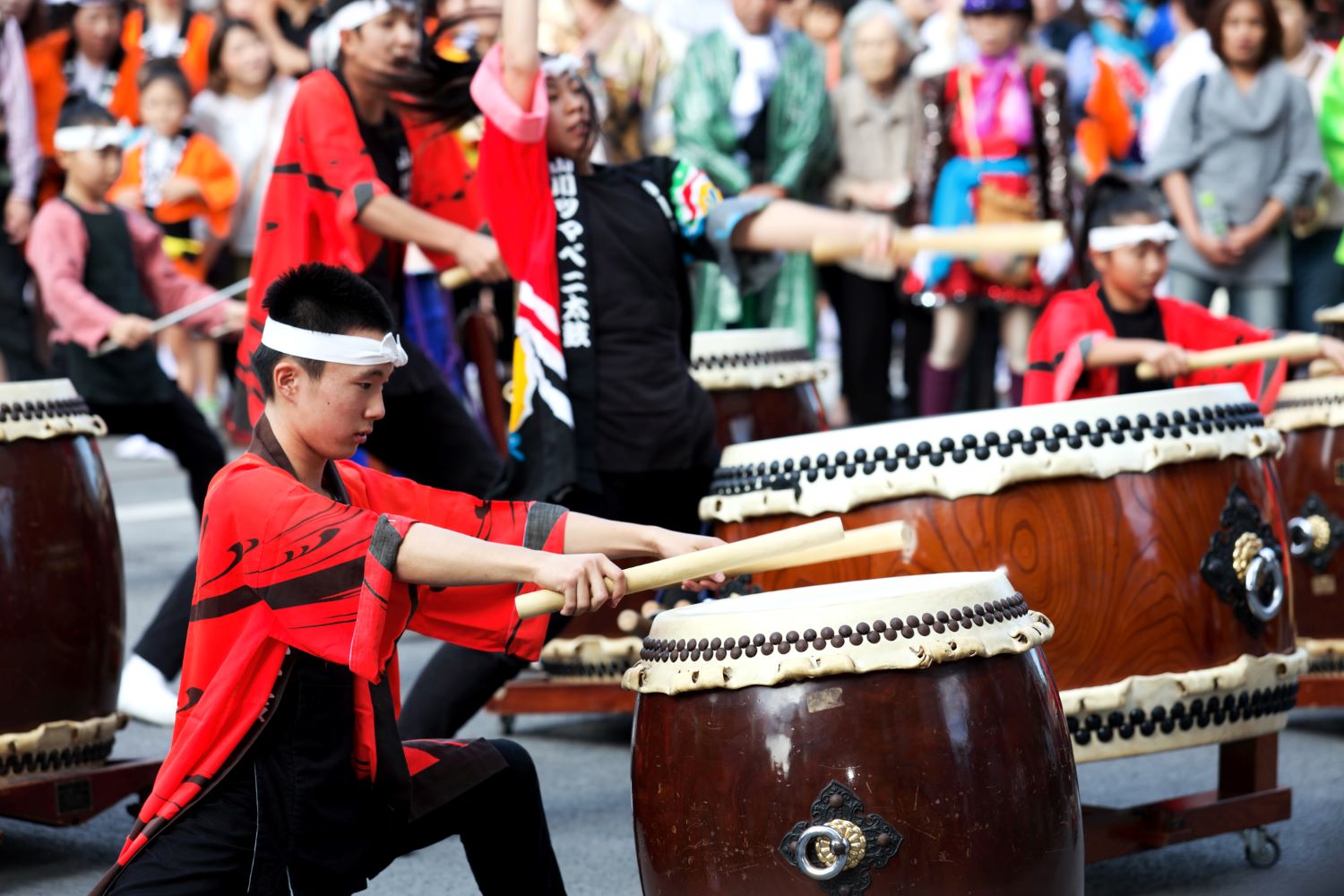
TOKYO
The celebratory sound of taiko (drum) has become integral to many festivals and performances across Japan. For centuries, taiko artisans and ensembles have helped preserve and advance these traditional Japanese instruments. Let’s dive into the history, craftsmanship and use of taiko drums in Japan.
The cultural significance of taiko extends beyond mere musical accompaniment, embodying a profound connection to Japan’s spiritual and communal traditions. Rooted in ancient Shinto rituals, taiko drums were believed to possess the power to communicate with deities, purify sacred spaces, and invoke a sense of unity in the community.
Taiko drums have evolved, adapting to various regional styles and incorporating modern elements into their performances. From the thunderous rhythms of festival processions to the delicate nuances of contemporary compositions, taiko continues to captivate audiences worldwide, transcending its traditional roots and finding resonance in global music scenes.
The Taiko Legend

Legend has it that the Japanese taiko, or “big drum,” has its roots in the ancient Jomon period when the sun goddess supposedly danced atop a large sake barrel. However, some historical records indicate that the first taiko drums were introduced from other parts of Asia during the Kofun period. Drumming on through the ages, the taiko has played various roles in communication, spirituality, entertainment and war.
In Feudal Japan, taiko was the heartbeat of battles, conveying orders and lifting the spirits of warriors. The belief that its powerful beats could resonate through the spirit world made taiko an essential part of ceremonies and festivals across Japan.
Carved from the immense trunk of a centuries-old tree, the taiko owes its durability and aesthetics to trees such as the keyaki (the Japanese zelkova tree). The meticulous process involves cutting, carving and waiting several years for them to dry.
A taiko can be made of a single hollowed-out tree trunk, or multiple wood planks, and engraving a pattern modifies the sound. The fine-tuning and shaping a taiko’s body reflects a craftsman’s knowledge and years of experience.
I – Word Understanding
Accompaniment – a musical part that supports or partners a solo instrument, voice, or group.
Communal – shared by all members of a community for common use.
Meticulous – giving or showing careful attention to every detail.
hollowed-out – to remove the inside of (something).
II – Have Your Say
1, What is a big drum used in Japanese festival?
2, What are the impacts of using taiko drum in Japan Why
986 Taiko: What are those big powerful drums you see at festivals in Japan?


